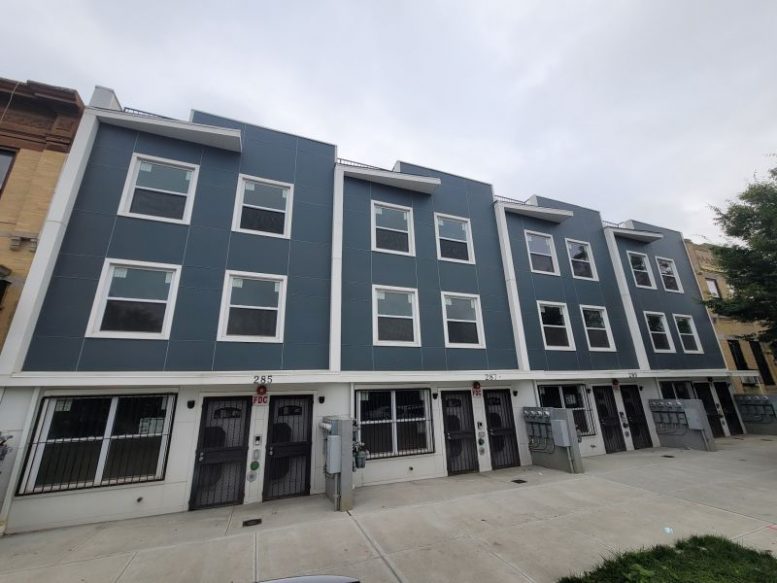The New York City Department of Housing Preservation and Development (HPD) has completed its latest affordable homeownership program in Brooklyn. Known as the Blake Hendrix project, the initiative introduces 30 new residential properties scattered across 13 different sites in East New York.
Properties include 13 new homeownership opportunities and 17 affordable rental units, all reserved for low- and moderate-income households. The homeownership units range from one-bedrooms to three-bedroom accommodations and were designed by DeLaCour, Ferrara & Church Architects. Residents earning between 90 percent and 110 percent of Area Median Income (AMI) are welcome to apply for ownership.
“Homeownership offers a real sense of security to families, and a foundation for building a better life for their children and their community,” said HPD commissioner Louise Carroll. “By utilizing city-owned land, the Blake Hendrix development in East New York has created 30 new affordable homeownership and rental opportunities for New Yorkers looking to take root in their neighborhood.”
Blake Hendrix is the latest cluster of homes to be built through New Infill Homeownership Opportunities Program (NIHOP), which the HPD uses to transform formerly underutilized city-owned land into affordable housing properties.
Total development cost for the project hovers around $13 million. The project received $6.1 million in New York City subsidies and $1.1 million from the New York State Affordable Housing Corporation. The Community Preservation Corporation and the Urban Investment Group within Goldman Sachs provides a $3.35 million construction loan through a joint funding partnership that was created to help finance affordable homeownership projects for moderate- and middle-income households in New York City.
Shelter Rock Builders, also known as SRBuild, served as general contractor and co-developer.
“Affordable homeownership is a key piece of the puzzle to closing the wealth gap in our communities. An affordable home helps build equity over generations and provides long-term security and stability to hardworking families,” said Robert Riggs, senior vice president and regional director at The Community Preservation Corporation. “We’re proud to help finance the Blake Hendrix project with our long-time partners at SRBuild, and my thanks to Goldman Sachs, Council Member Barron, and Commissioner Carroll and her team at HPD.”
Subscribe to YIMBY’s daily e-mail
Follow YIMBYgram for real-time photo updates
Like YIMBY on Facebook
Follow YIMBY’s Twitter for the latest in YIMBYnews






Nice design, but why does no one think about the power meters or where the garbage cans will sit?
They wanted three occupied floors with full size windows at about the same height as the neighboring 2 story buildings, which have exposed small basement windows. This decision didn’t leave any space on the front. They should have elevated them, stairs to first primary occupied floor (lobby), meters alongside stairs or trash area under stairs and meters under windows.
Looks to be 4 units per building too so maybe just go with one entrance door and lobby.
Agreed
I hear you on the meters, but the best place to put garbage out for collection would be in sealed receptacles in the roadbed. Cities around the world do this because it keeps sidewalks clear for walking, and prevents rats from getting into the trash.
I agree there are better solutions but every cent matters in these affordable housing developments.
Alternatively the city could install large containers on the corners for the whole block. This should be the standard citywide anyway since most buildings leave trash in the street for pickup, and new construction over a certain number of units should have required designated loading areas (I think this is already required looking at larger developments).
Look at those meters! My Lord that’s got to be the most egregious example I’ve seen in a long long time. Hideous and sad.
After looking at them you could hide the meters with some kind of composite/plastic covering. As long as the meters can be serviced it shouldn’t be an issue. Too bad the developer didn’t do.
I would have also created a small garden below the windows, the same distance the meters come out. Could be used for rainwater retention as well.
They didn’t even try to make these look attractive…